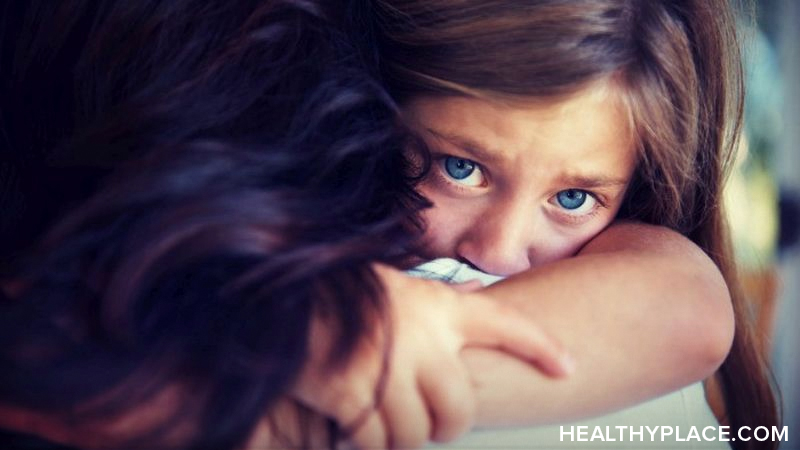Is There Child Therapy for Anxiety? My Child is Extremely Anxious

Child therapy for anxiety has been well-researched and shown to be effective in treating children who are anxious. In fact, the Anxiety and Depression Association of America asserts that most children need professional help to manage and overcome anxiety. If your child is struggling and anxious, you have numerous options regarding child therapy for anxiety.
Some anxiety in kids is typical. As kids grow and develop and navigate school and an expanding circle of activities, peers, and groups, it’s normal to feel anxiety as they adjust to new situations and determine if or how they fit in.
Sometimes, though, anxiety becomes intense if stressors are too big or too many and they begin to see many everyday situations as threats. Their anxiety can grow beyond what they can handle, and they begin to react to perceived threats in extreme ways, such as avoidance, becoming ill, frequent crying, and worrying excessively, making them seem “uptight.”
When anxiety begins to negatively affect their daily life, interfering with school, home, activities, or peer relationships, child therapy for anxiety might be in order. If their anxiety is increasing and interfering, it can worsen without professional help ("What Is Generalized Anxiety Disorder (GAD)?")
Therapy helps kids develop the tools to manage anxiety on their own. Several types of child therapy for anxiety exist. Here’s a rundown on what they are and how they can help.
Types of Child Therapy for Anxiety
Traditional research-based types of child therapy for anxiety include approaches such as:
- Cognitive-behavior therapy (CBT)
- Exposure therapy
- Education
- Acceptance and commitment therapy (ACT)
- Dialectical behavioral therapy (DBT)
This brief look at what each type of traditional child anxiety therapy does will equip you with information to consult with a therapist to determine if they’re a good fit for your child.
CBT is a type of talk therapy that teaches kids skills to decrease anxiety. CBT focuses on thoughts, especially negative thoughts, that contribute to anxiety as well as thinking patterns that keep kids stuck in their anxiety.
Exposure therapy focuses on behavior to reduce anxiety. The therapist works with the child to gradually, methodically, and safely expose them to their anxiety triggers. It is particularly effective for separation anxiety, social anxiety, phobias, and obsessive-compulsive disorder (OCD). Exposure therapy is often used in conjunction with CBT.
Education can, and typically is, a component of all types of anxiety therapy. The therapist will help your child understand what anxiety is and how it overtakes them. The more kids understand, the more they can distance themselves from their anxiety.
ACT helps kids learn acceptance and mindfulness to cope with thoughts and feelings. They learn practical strategies to deal with anxiety anytime it begins to interfere in their lives.
DBT helps children investigate how they deal with negative thoughts, emotions, and conflict. They come to see how they can take responsibility for their own problems, including anxious thoughts and actions.
These are traditional approaches to child therapy for anxiety. Another approach, developing since the middle of the last century and successfully undergoing research to show its effectiveness, is play therapy.
Play Therapy for Anxiety
In play therapy for anxiety, kids work through their anxiety and other challenges in a way that comes naturally to them: playing. Children communicate and problem-solve through play. In play therapy, the anxious child takes the lead, which gives them a sense of control over themselves, and their world.
A playroom is free from many of the things that make children anxious. Kids are allowed to be themselves and make choices.
In addition to free play, kids interact with the therapist to engage in fun, purposeful activities to reduce anxiety. Just some of the play therapy activities for anxiety are Bubble Breaths (learning deep, relaxing breathing by blowing bubbles), Worry Can (kids decorate a can (container) to store collected small objects representing their worries), Party Hats On Monsters (to make anxiety less intimidating and controlled by the child), and The Feeling Word Game (to give words to what they feel).
Play therapy for anxiety provides many benefits, including:
- A chance to experience success
- Empowerment and a sense of control over themselves, anxiety, and life
- Learning to make choices and decisions with no negative consequences
- Increased problem-solving skills
- Heightened self-awareness
- Improved ability to relax, self-soothe
Many types of child therapy for anxiety are available. Which one is best for your child depends on their specific anxiety and personality. Further, no approach works for every child. Children, their anxiety, therapists, and treatment approaches are all unique. You know your child better than anyone. Meet with several therapists and ask about their approach to anxiety to help find the best fit for your child and their anxiety.
APA Reference
Peterson, T.
(2022, January 11). Is There Child Therapy for Anxiety? My Child is Extremely Anxious, HealthyPlace. Retrieved
on 2026, January 9 from https://www.healthyplace.com/parenting/child-therapy/is-there-child-therapy-for-anxiety-my-child-is-extremely-anxious



